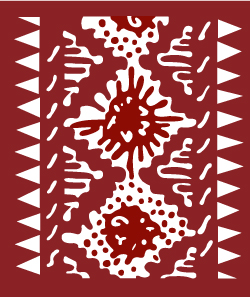March 2025 - Oceans that Speak, IAMM
“Oceans That Speak”- what an intriguing title for an exhibition at the Islamic Art Museum Malaysia (IAMM). MCG Events organized a tour of the exhibition on Wednesday, March 15. Puan Marina from IAMM, was our amazingly knowledgeable and willing guide. The sub-title throws more light on the subject, “Islam and the Emergence of the Malay World.” For well over a millennium, the ships that carried merchants to the Malay Archipelago brought so much more than their trade, one of the most consequential being Islam. Included in the Malay Archipelago are Malaysia, Indonesia, Singapore, Brunei, southern Thailand and the Philippines. Sometimes the word Nusantara (Nusa – islands, Antara – in between) is used interchangeably with the Malay World. Arab, Persian, Indian and European traders came from the West and the Chinese from East Asia. In fact, the archipelago was known so far afield, that early Greeks and Romans referred to Malaysia as the Golden Chersonese (Golden Peninsula). All of this was in the days before Islam.
The earliest scripts used to record Malay, were Indic scripts, such as Pallava and Kawi. Before Islam, the Malay World was governed by Hindu-Buddhist kings whose beliefs were brought by traders and monks. With the coming of the Arab traders, over time, these belief systems were eventually supplanted by Islam. Malay was the lingua franca of the region. Along with Islam came Jawi, the script used to record the Arabic language, which has been used here for more than 700 years. It should be noted that Jawi is a script, not a language, so it can be used to record any language. However, in adapting Jawi script to spell words in the Malay language six extra consonants were added, just as in Java to accommodate the Javanese language, seven extra letters were added. Use of Jawi in written Malay has declined as Rumi, Romanised script, introduced by the British in 1871 is now the norm, with Jawi being found largely in religious contexts.
Maps were as essential to the early navigators as they were to later Europeans in pinpointing the way to port cities for entrepot trade. The earliest known Malay port was Langkasuka, having emerged almost two thousand years ago. Guides from local regions were frequently taken on board to act as pilots for the initial exploration, but maps became invaluable. Port cities were ruled by sultans and sometimes even sultanahs, who were also traders and so were desirous of having merchants reach their kingdoms. These maps evolved from basic regional ones produced by local navigators to large, very detailed ones produced by cartographers for European merchants.
In trade, Indian textiles were particularly sought after, especially patolu (plural patola), a finely woven silk ikat from Gujarat, reserved for weddings and treasured as heirlooms. Ceramics, especially with Islamic elements, often in Jawi, made with a stunning cobalt blue underglaze were valued items that came from China. Objects made of gold, frequently done in gold-filigree were stunning.
Magnificent wood carvings that came from Java reflected a centuries old heritage of a belief in the balance of nature and the divinity and harmony of the universe. Elaborate doors often adorned many buildings especially palaces. Exquisitely carved dowry boxes were made for women about to get married, with attached wheels, allowing them to carry their possessions to their new marital home.
The spread of Islam led to the rise in demand for exquisitely illuminated religious manuscripts and texts throughout the archipelago. The ‘Ulama (religious scholars) were responsible for the transmission of knowledge from Arabic and Ottoman resources. Texts were painstakingly prepared by two different craftsmen, one who did the decorations around the text and the second one who transcribed the words in the centre of the pages. The intention of the copyist or author in using Malay was to make the dissemination of knowledge easier. To this end the text was written larger in Arabic using Jawi and interliners, using smaller Jawi letters, were written under each line in Malay. These pages are done in recognizable styles, which varied according to the location where they were produced, such as Kashmir style, Patani style, Terengganu style.
The arrival of the Portuguese in Malacca in 1511, Spanish in the Philippines in 1565, Dutch in Indonesia in 1596 and British in Bencoolen in 1685 opened a new market for all kinds of handicrafts especially for the Europeans; textiles, weapons, coins, paintings, jewelry and objects for a home. Such items were used while the colonizers lived in Asia and then were taken home with them when they left. These artifacts were created to very exacting standards, showcasing the skill of the local craftsmen. However, in terms of trade, the formerly free, vibrant port cities became controlled colonial outposts.
In the 16th century spices were the subject of international attention, with cloves, nutmeg, mace, cardamom, pepper, star anise, cinnamon and betel nut being sought after. Many rulers of the Malay world became wealthy as the region was the producer of spices. Malacca was known around the world as the emporium of spices, which were purchased there and then sent on to Venice, the market place of Europe to satisfy the almost insatiable demand in the West.
These global movements carried languages, religions, scripts, philosophies, products and learning back and forth across the seas. Travel by land accomplished the same things but at a much slower rate and more expensive cost. The seas will forever bind the peoples of the world, speaking to those who sail, urging them to always push on further.
Many thanks to Leslie Muri for this detailed and fascinating review.
Photos taken on the day thanks to Joni Kerr and Lorna Haizelden, with additional photos taken from the book, ‘Oceans that Speak: Islam and the Emergence of the Malay World’ available at IAMM.

